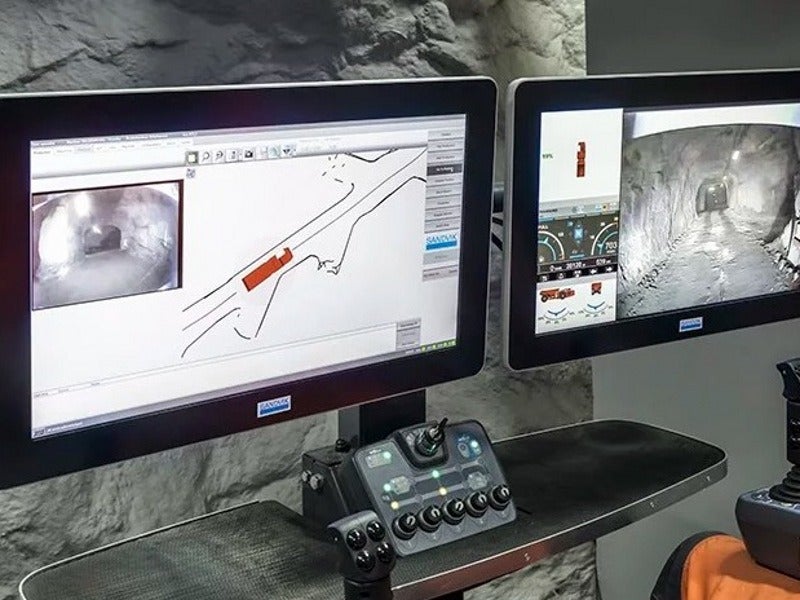The Chuquicamata (Chuqui) open-pit copper mine in Northern Chile is being converted into an underground mine to exploit the remaining resources and extend its mine life. Corporación Nacional del Cobre de Chile (Codelco) owns and has been operating the copper mine since 1915, which is one of the world’s biggest open-pit mines.
Environmental authorization for the new underground mine, beneath the present open-pit mine, was granted in September 2010.
Construction of mine tunnels began in 2016, while underground mining activities began in April 2019. Ore transportation and processing is expected to be started in the second half of 2019, which will extend the project life by an additional 40 years. The estimated capital expenditure of the project is $4.3bn.
The transformation is a part of Codelco’s ten-year, $39bn-worth strategic project, which is supported by the Government of Chile with a $1bn capital contribution.
Chuquicamata copper mine location, geology, and mineralization
The Chuquicamata copper mine is located in the Codelco Norte Division, lying approximately 1,650km north of Santiago, Chile. It is located within the north-north east-trending intrusive complex named Chuqui porphyry complex.
A 4m to 6m-thick and 150 to 200m-wide regional fault controls the mineralization at the project site.
Granodiorites and porphyries, in contact with the West Fault, are the prominent rock types identified at the project.
The project also hosts a massive quartz-sericitic rock body on the eastern side of the West fault, in addition to porphyries.
Chuquicamata copper mine reserves and production
Ore reserves of the Chuquicamata underground mine are estimated to be 1.76 billion tons of copper and molybdenum, grading 0.7% copper and 502ppm molybdenum.
The underground operation will initially have a nominal production capacity of 140,000tpd, which will be ramped-up to full production in seven years.
It is anticipated to produce 366,000 tons (t) of copper and 18,000t of fine molybdenum a year. It is expected to create 7,500 jobs during construction.
Mining and ore processing at Chuquicamata copper mine
The Chuquicamata copper mine currently employs conventional open-pit mining method, with the help of trucks and shovels.
The underground mine proposes to use block caving method of mining, through a 1,000m-deep shaft. Ore will be extracted by macro blocks and block caving in four production levels. It will require a main access tunnel of 7.5km length, five ramps, and two air-extraction shafts.
The open-pit operation has extracted 8,000t of ore through the five ramps, following the start of mining.
As part of the open-pit to underground transformation, the process control camera system will be upgraded and included with between 10 and 80 high-definition cameras. A new circuit of HD cameras will be installed for monitoring the process.
The project will make use of the existing processing plant and infrastructure for copper and molybdenum production. It will make improvements on the existing secondary grinding plant of the concentrator, which is estimated to cost $173.67m.
The AutoMine solution enables customers to utilize automation at their own pace, while OptiMine helps in digital analysis and optimization of ore production and processes.
Chuquicamata copper mine infrastructure
Power supply for the project, including underground operations, will be provided by the Tchitack main substation, located near the mine site.
Contractors involved
Hatch was awarded the contract to conduct the feasibility study and basic engineering of the new mine, in November 2009.
Metso is the supplier of 12 underground crusher stations and a conveyor package, under a contract awarded in August 2016. The contractual scope includes engineering and supply of 11 C200 jaw crushers, 24 push feeders, and 20 conveyors.
In April 2019, Sandvik agreed to provide its advanced production automation system for the underground project, which is modelled on its AutoMine and OptiMine products.
Codelco engaged Rockwell Automation for the supply of important systems for Chuquicamata under a $50m contract. The two companies also agreed to collaborate in order to provide detailed engineering, supply, and configuration of the systems, as part of the contract.
Mine Ventilation Services and SRK prepared a fire modeling study for the Chuquicamata underground mine.






